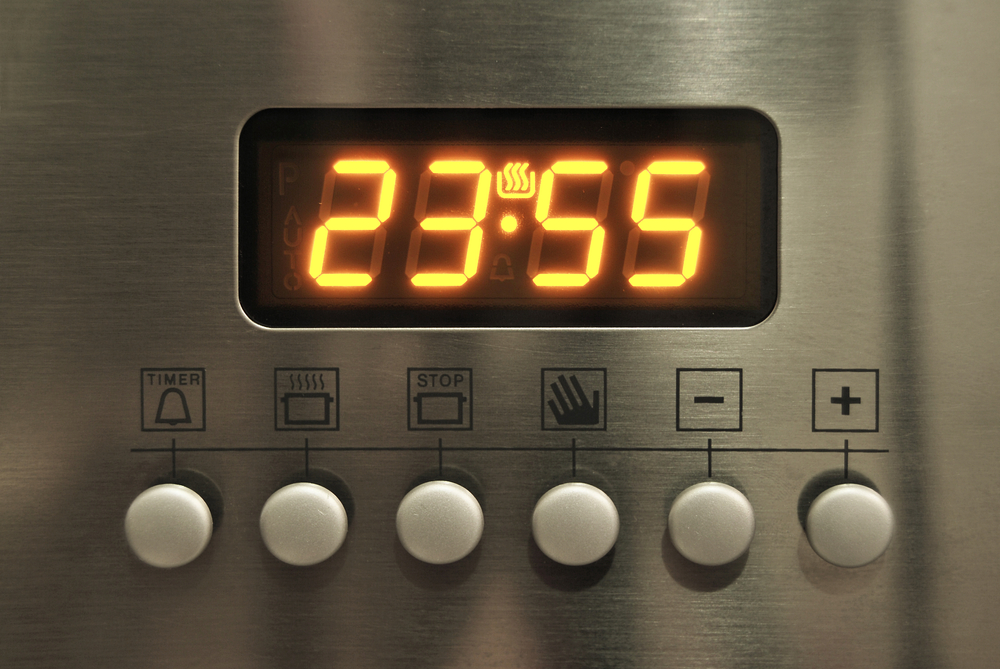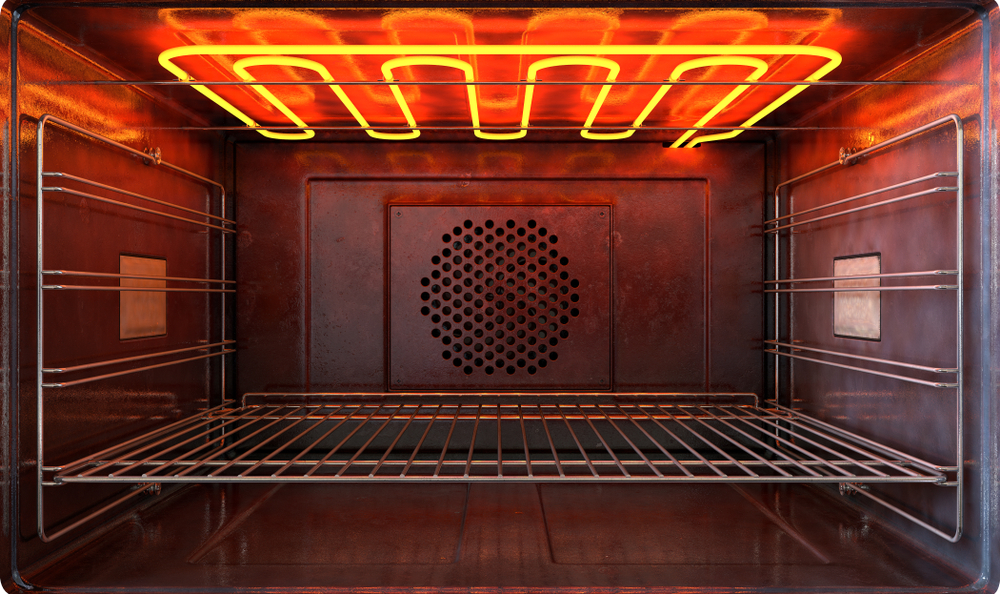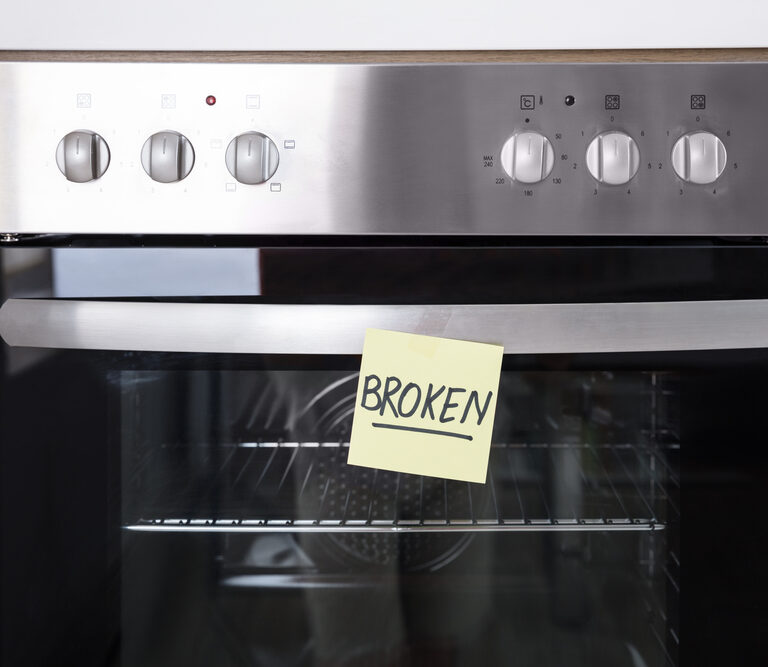Is there anything worse than preparing to cook your meal but then discovering that your oven is not heating up? Whether you have a gas-powered or electric oven, if it fails to heat up, your dinner won’t be ready on time — or indeed, at all!
If you’re wondering why your oven isn’t heating up, some expert advice could be in order. Here, we give you some top tips to help point you in the direction of why this problem may be occurring and how it can be resolved.
Electric Ovens
Let’s start with how to diagnose and fix the problem for your electric oven —the most common variety of this household appliance.
How Do I Tell if My Electric Oven Is Heating Properly?
If your oven isn’t heating up at all, it’ll be pretty obvious. After all, your food won’t cook, and the inside of the oven will still be cold, even after 30 minutes or so.
However, sometimes your oven may appear to be heating, but isn’t reaching the correct temperature for its setting. You can determine whether this is the case by using a temperature gauge which is capable of withstanding the temperature inside a correctly working oven.
Simply put the gauge into the oven and select your chosen temperature. Allow some time to let the oven heat up, then check the gauge to see if the temperature reached is correct, or if some adjustment is required.
How Do I Find Out Why My Oven Isn’t Heating Up?
There are a few things that you can check to determine why your oven is failing to heat up:
- The heating elements
- The temperature bulb or sensor
- The selector switch or thermostat
- The calibration dial
You’ll need to keep your user manual to hand for reference while you’re carrying out your checks. You will also require a multimeter which will enable you to run some simple tests. Multimeters, like the WeePro Vpro850L, read the ohms or voltage traveling through the wires.
Could the Oven Clock Be the Problem?

Although it may sound unlikely, in fact it’s true that your oven’s clock could be causing your problem. Bizarrely, it’s been proven that if your oven clock isn’t set, the entire oven may stop functioning. Fortunately, this is one of the easiest fixes for your oven not heating up.
If you’ve recently had a power cut at home, this could have caused your oven clock to become unset. You’ll need to set it again. Check your user manual to learn how you can set the correct time on your model and make of oven.
If you’ve tried resetting the clock and the oven still won’t heat up, the clock may have failed and it will therefore need replacing.
Testing the Temperature Sensor
A lot of electric ovens are equipped with a temperature sensor which monitors the temperature inside the oven constantly. Should this sensor become defective, the oven won’t heat properly. As a result, your food may take much longer to cook, or may be cooked unevenly.
Check to ensure the sensor isn’t touching to wall inside the oven as this will affect its ability to measure the temperature accurately. If it is touching one of the interior walls, reposition it and this should rectify the problem.
If your oven doesn’t have a temperature sensor, it will have a temperature-sensing bulb which will control the oven’s temperature. You’ll need to check that the bulb isn’t burned out or loose. You should also use a multimeter to check whether the sensor or bulb is functioning properly. If the resistance doesn’t rise, the sensor or bulb is faulty and requires replacement.
Checking for a Defective Heating Element

A top cause of electric ovens failing to heat up is a defective heating element. Fortunately, it’s usually simple to quickly tell if your heating element isn’t working or is burning out since a functioning heating elements will glow bright red.
You can suspect a broken heating element if:
- The oven clock is functioning and is set to manual, rather than automatic.
- The light on the oven that indicates the oven hasn’t yet reached the appropriate temperature remains on.
- The oven’s fan is functioning properly.
You can test your heating element by using a multimeter. First, ensure the appliance is disconnected from the mains, then identify the electrical connections where power flows through the element.
Using a low resistance setting on the multimeter, put one probe onto each connection. Check the reading to ensure it is between 20 – 100 ohms. If no connection exists, the heating element will require replacement.
This video gives you a quick tutorial of how to change the heating element yourself.
Is There a Loose Connection?
If you’ve installed a brand-new heating element but your oven still isn’t working, there could be a loose wire or connection. Use a voltage meter to check the wires leading to the element to see whether this is the cause of your problem.
Is the Thermostat at Fault?
If your heating element isn’t the cause of the problem but your oven still isn’t producing heat, the cause could lie with the thermostat. There may also be an issue with the selector switch which changes the oven settings —it could be sticking, or it could be entirely defective.
You can tell if your oven’s thermostat is working correctly by looking at its temperature indicator light. This will be found on your oven’s front. It should stay lit up until the oven has reached its selected temperature. If the light isn’t lighting up at all, this indicates the thermostat is faulty and requires replacement.
Checking the Terminal Block
One further part that could cause your oven to stop heating up is its terminal block. There are a few signs that this could be the source of your problem, including:
- The oven clock isn’t displaying
- Parts of the oven aren’t working
The terminal block can be found at the rear of your appliance, where you’ll see several circuits which are connected from the main power connection by links. Ensure the appliance has been disconnected from the mains fully before you attempt any repair. Check for any loose connectors or links, as well as any sign of charring. If you spot any damage, you’ll need to replace the terminal block.
Gas Ovens
All the solutions that we’ve looked at so far are only applicable to electric ovens. So, what could be the cause of the problem if your gas oven isn’t heating?
Why Is My Gas Oven Not Heating?
The first thing to check is the gas oven’s bake ignitor. This is the whole unit which you can find at the rear of the oven. Its terminals are the wires which connect to your Oven Control. Follow these steps to see if this is the cause of your heating problem:
Step 1.
Before you do anything, make sure the oven is pulled fully away from the wall and that the gas supply has been switched off.
Step 2.
Take the burner grate, base and cap off.
Step 3.
Clean any remaining food debris from the burner using compressed air or a toothpick.
Step 4.
Clean the case, cap, and grate.
Step 5.
Check the wires which connect the control module to the ignitor. If you find a loose connection, tighten it up to see if this resolves the problem.
Step 6.
If this doesn’t resolve the issue, remove the bake ignitor by unbolting it from the floor of the oven.
Step 7.
Use the multimeter to check whether power is being transferred correctly. Put one of the probes onto each terminal and check the reading. If the reading is between 0 ohms and 1100 ohms, the ignitor is working correctly. If the reading isn’t registered within this range, the ignitor has lost its power continuity and so requires replacement.
Other Potential Issues
There are a couple of other issues which could also be causing your gas oven to fail to heat.
Your gas safely valve may have failed, or there may be a kink somewhere in the gas lines.
If the burner isn’t igniting, even if you use a match, the fault might lie with the supply of gas to your home. If so, you’ll need to call in professional help to resolve the gas supply issue so that your oven can function properly once more.
Remember that you shouldn’t try to resolve a gas supply problem yourself, as this could be extremely dangerous.
Resolving Your Oven Heating Problems
As you can see, there are several reasons why your gas or electric oven may not be heating up. However, if you follow the expert advice we’ve given here, you should soon be able to pinpoint the cause of the issue and quickly rectify the problem, so you can start cooking delicious meals once more!
